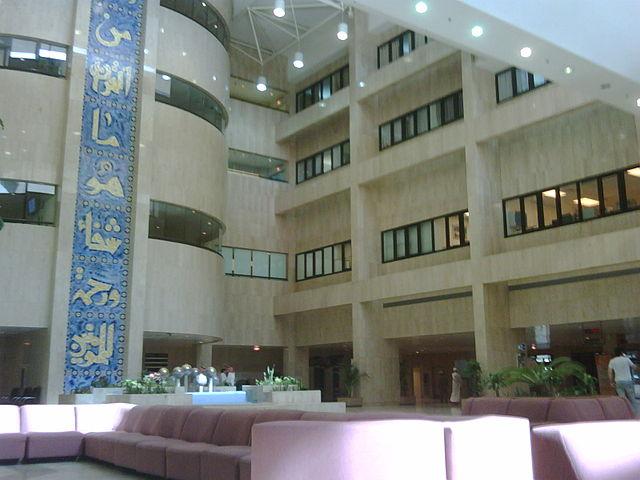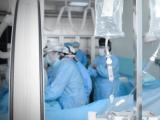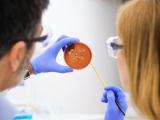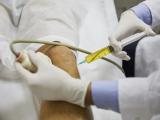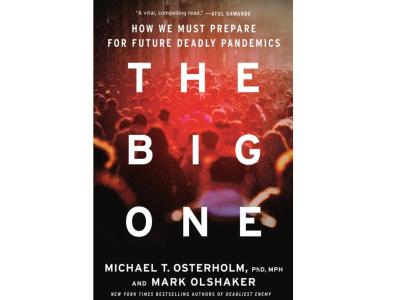The surge of MERS-CoV (Middle East respiratory syndrome coronavirus) cases continued today with a report of 12 more in Saudi Arabia, as the World Health Organization (WHO) said the recent pattern of cases suggests that spread of the disease has increased slightly, for reasons that are unclear.
In an updated risk assessment, the WHO predicted that more cases will keep cropping up in the Middle East and being exported to other regions until the virus's pathway from animals to humans is better understood—and blocked.
Also today, officials at the European Centre for Disease Prevention and Control (ECDC) wrote in a Eurosurveillance editorial that in view of the current MERS situation, the WHO ought to consider declaring a public health event of international concern. The WHO statement does not mention that option.
New cases in Saudi Arabia
The new cases in Saudi Arabia include 6 in Jeddah—the country's current epicenter of MERS activity—5 in Riyadh, and 1 in Mecca, according to a computer translation of a Saudi Ministry of Health (MOH) statement.
Among the patients are 5 healthcare workers—3 in Jeddah, 1 in Riyadh, and 1 in Mecca. The new case in Mecca follows reports of 4 cases there yesterday, which were described as the first in Islam's holy city.
Six of the latest case-patients are hospitalized in stable condition, five are in intensive care units, and one has no symptoms, according to the MOH statement. Their ages range from 19 to 79, but most are middle-aged or elderly.
The MOH also reported two deaths in previously reported cases, involving a 68-year-old in Mecca and a 72-year-old woman in Riyadh.
With the 12 new cases, Saudi Arabia's posted MERS count increased to 297 cases and 85 deaths. Later today, the posted count increased again, to 299 cases and 87 deaths, but there apparently was no immediate announcement about the additional cases.
Like yesterday's MOH statement, today's gives far more details on the new cases than were supplied in most Saudi announcements since the emergence of the virus. For example, it lists the patients' nationalities and hospitalization dates and names eight hospitals that have admitted patients. Among the new patients are individuals from Syria, Indonesia, Pakistan, Egypt, and Palestine.
The change in the reporting follows the news earlier this week that Saudi Arabia's health minister had been reassigned and replaced by the labor minister, Adel bin Mohammad Faqih, who is serving in an acting capacity. In a statement 2 days ago, Faqih pledged to adhere to "the principles of transparency and disclosure with all media outlets" and the public.
Also today, the WHO offered details on the MERS case in a 25-year-old man from Al Grayat City, Saudi Arabia, who is hospitalized in Jordan, as first reported by the MOH yesterday. The WHO said the man was initially hospitalized in Saudi Arabia on Apr 9 but left the hospital against medical advice. On Apr 19 he sought treatment at a hospital in Zarqa, Jordan, where he tested positive for MERS-CoV.
The man, who has underlying medical conditions, had traveled to Abha, Mecca, and Jeddah just before his illness, the WHO said. He also had contact with camels, which are regarded as a likely source of human cases, and is reported to have drunk camel milk.
WHO sizes up the risk
In its risk assessment, the WHO observed that the flow of MERS cases has increased sharply since mid-March, especially with "two important healthcare-associated outbreaks" in Saudi Arabia and the United Arab Emirates (UAE). Echoing what some others have been saying lately, the agency commented that the occurrence of new MERS cases "seems to follow a seasonal pattern, with increasing incidence from March-April onwards."
The agency went on to repeat some points made by its Eastern Mediterranean Regional Office yesterday: that up to 75% of the recent cases are secondary ones (transmitted from other people), and the majority of these cases are in healthcare workers. Most of the infected healthcare workers had no or only minor symptoms.
"Only four instances of transmission within households have been reported, and no large family cluster has been identified," the agency added. Also, there has been no sustained human-to-human transmission, with just two tertiary cases reported thus far.
While many cases have occurred in healthcare facilities, the number of community-acquired cases unconnected to other known cases also has risen lately, the agency said. It also noted the cases recently exported from the Middle East to Greece, Jordan, Malaysia, and the Philippines, with no further transmission so far.
The pattern of mostly secondary cases "suggests slightly more human-to-human transmission than previously observed," the WHO stated. It cited two possible explanations for the increase: breakdowns in infection prevention combined with increased contact tracing and screening, and an increase in the virus's transmissibility.
Several factors support the first explanation, the agency said. The clinical picture looks much the same, as secondary cases tend to be milder than primary ones. Also, the exported cases have not sparked further cases, there have been very few instances of household transmission, and household and community clusters have not been seen to increase.
As for a change in the virus, there's too little information to exclude that possibility at this point, the agency said.
The WHO went on to predict that more cases will occur "until the mode of transmission is determined and preventive measures implemented to break the chain of transmission from the source to humans." Also, "It is very likely that cases will continue to be exported to other countries" through tourists, guest workers, or pilgrims.
ECDC officials call for changing approach
In their Eurosurveillance editorial, two top ECDC officials said the current surge of MERS cases suggests a need to change the response to the virus. The authors are ECDC Director Marc Sprenger, MD, PhD, and Denis Coulombier, MD, head of the ECDC's Unit for Surveillance and Response Support.
They write that the global MERS-CoV count as of yesterday was 345 cases and 107 deaths, well above today's WHO count of 254 cases and 93 deaths, cited in the statement about the case in Jordan.
"MERS-CoV infections present with a high case-fatality ratio, multiple transmission routes are suspected, cases are reported among healthcare workers, multiple disease foci are affecting SA [Saudi Arabia], and cases have been exported," Sprenger and Coulumbier say.
"All these facts are criteria for considering declaring a public health event of international concern listed in annex II of the WHO international health regulations. Two years and 345 cases after the start of this epidemic, we remain with many unanswered questions and lack serological studies and sequences from human cases."
They note that cases outside the Arabian Peninsula have not sparked sustained transmission, but add, "However, the recent rapid change in the epidemiological pattern of the disease should call for a change of approach to ensure a rapid understanding of the determinants of this emerging epidemic and its effective control, which will require a joint intervention from veterinary as well as human health authorities worldwide."
They also comment on the apparent seasonality of MERS cases, suggesting, as some others have, that it may be related to camels: "It is interesting to note that the possible seasonal increase of human MERS-CoV cases corresponds to the end of the calving season for camels in Saudi Arabia. This temporal correlation has still to be explored."
Saudi MOH names MERS consultant
In other developments, the Saudi MOH today announced the appointment of an "independent medical consultant" to help address the MERS epidemic.
He is Tariq Ahmed Madani, MBBS, a professor of internal medicine and infectious diseases at King Abdulaziz University who already serves as an advisor to the country's health minister and to the head of the National Infection Control Committee, according to information released by the MOH.
See also:
Apr 24 Eurosurveillance editorial
Apr 24 Avian Flu Diary blog post with computer translation of MOH statement on 12 new cases
Apr 22 statement from new Saudi health minister
Apr 24 WHO statement on exported case in Jordan
Apr 24 Avian Flu Diary blog post with translation of MOH statement an appointment of MERS consultant
